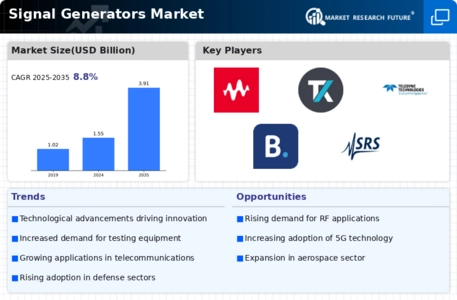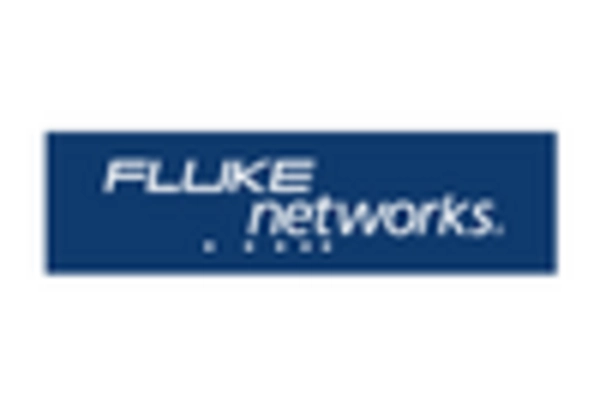Market Trends
Key Emerging Trends in the Signal Generators Market
The Signal Generators Market is witnessing notable trends that are shaping the industry's landscape and influencing the choices of both manufacturers and end-users. One prominent trend is the increasing demand for higher frequency signal generators. As applications in wireless communication, aerospace, and automotive sectors evolve, there is a growing need for signal generators capable of producing signals at higher frequencies to meet the demands of advanced technologies like 5G networks and radar systems. Manufacturers are responding to this trend by developing and introducing signal generators with expanded frequency capabilities.
Another significant trend in the Signal Generators Market is the integration of software-defined radio (SDR) technology. SDR enables signal generators to adapt to changing standards and requirements without the need for hardware modifications. This flexibility is highly valuable in dynamic industries like telecommunications, where protocols and standards are continually evolving. Signal generators with SDR capabilities provide users with the ability to reconfigure and update their instruments, ensuring long-term usability and cost-effectiveness.
The rise of Internet of Things (IoT) devices is driving a trend towards compact and portable signal generators. With the increasing deployment of IoT in various industries, there is a growing demand for testing and measurement equipment that can be easily transported and utilized in diverse settings. Portable signal generators offer flexibility for on-site testing and troubleshooting, aligning with the needs of industries such as manufacturing, healthcare, and logistics.
Automation and remote control capabilities are emerging as essential trends in the Signal Generators Market. As industries embrace Industry 4.0 and automation, there is a growing demand for signal generators that can be seamlessly integrated into automated test systems. Manufacturers are developing instruments with advanced software interfaces, allowing users to control and monitor signal generators remotely. This trend facilitates efficient testing processes, reduces manual intervention, and enhances overall productivity.
Energy efficiency is becoming a key consideration in the design and manufacturing of signal generators. As industries prioritize sustainability and energy conservation, there is a trend towards developing signal generators with lower power consumption. Energy-efficient instruments not only contribute to cost savings for end-users but also align with global initiatives promoting eco-friendly technologies and responsible manufacturing practices.
The Signal Generators Market is also witnessing a trend towards enhanced modulation capabilities. With the increasing complexity of communication systems, there is a demand for signal generators that can accurately simulate diverse modulation schemes. Manufacturers are focusing on incorporating advanced modulation features, such as complex signal waveforms, multiple modulation formats, and real-time signal generation, to meet the evolving testing requirements of modern communication technologies.
Artificial intelligence (AI) and machine learning (ML) are making their mark on the Signal Generators Market. Manufacturers are exploring ways to integrate AI and ML algorithms into signal generators to automate testing processes, optimize signal parameters, and enhance overall performance. AI-driven signal generators have the potential to adapt to dynamic testing scenarios, improve testing efficiency, and provide valuable insights for users.
Lastly, there is a growing trend towards comprehensive user interfaces and user-friendly design in signal generators. Manufacturers are prioritizing the development of instruments with intuitive controls, touchscreens, and streamlined menu structures to enhance user experience. This trend aims to make signal generators more accessible to a broader user base, including engineers and technicians with varying levels of expertise.
















Leave a Comment